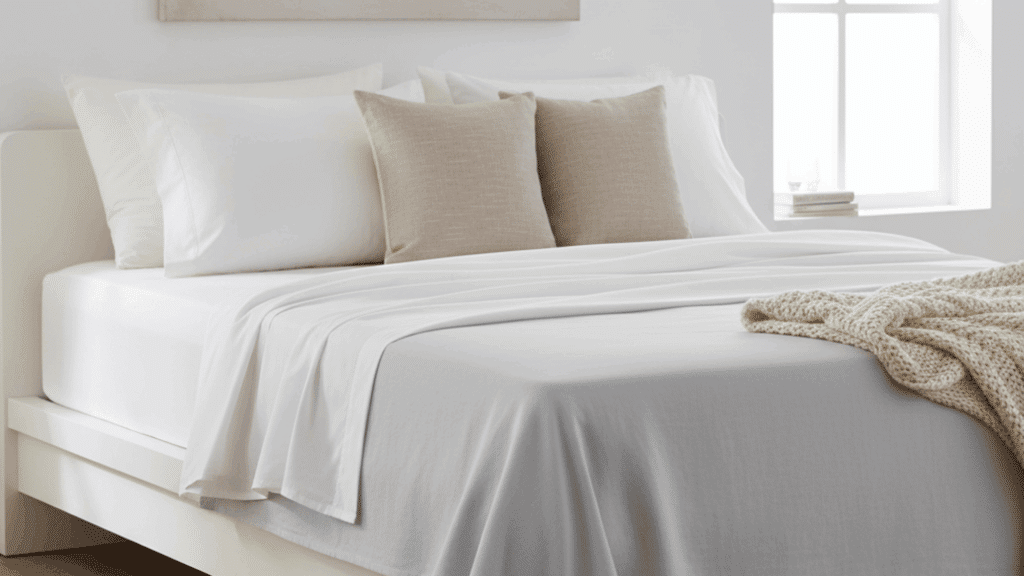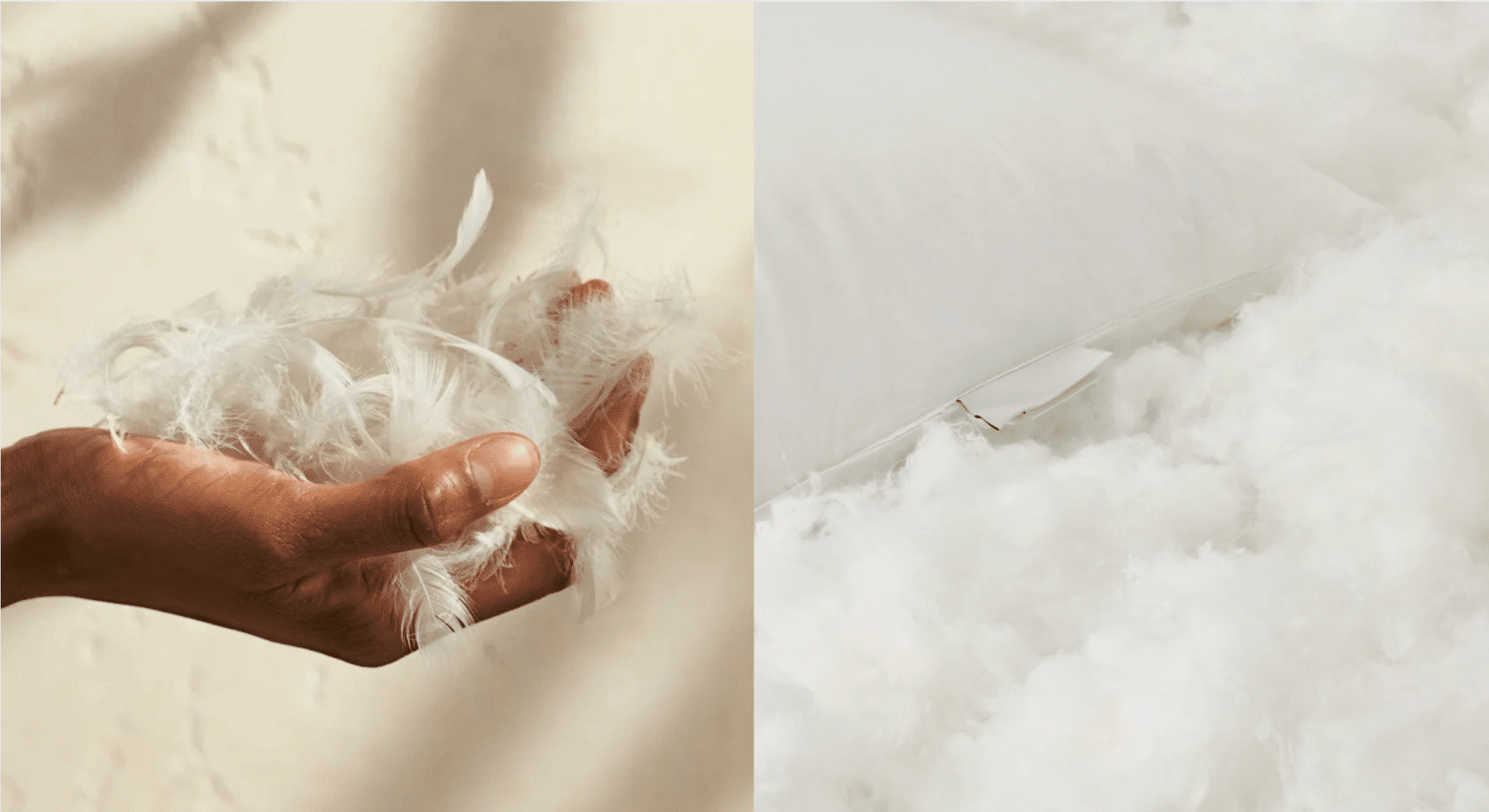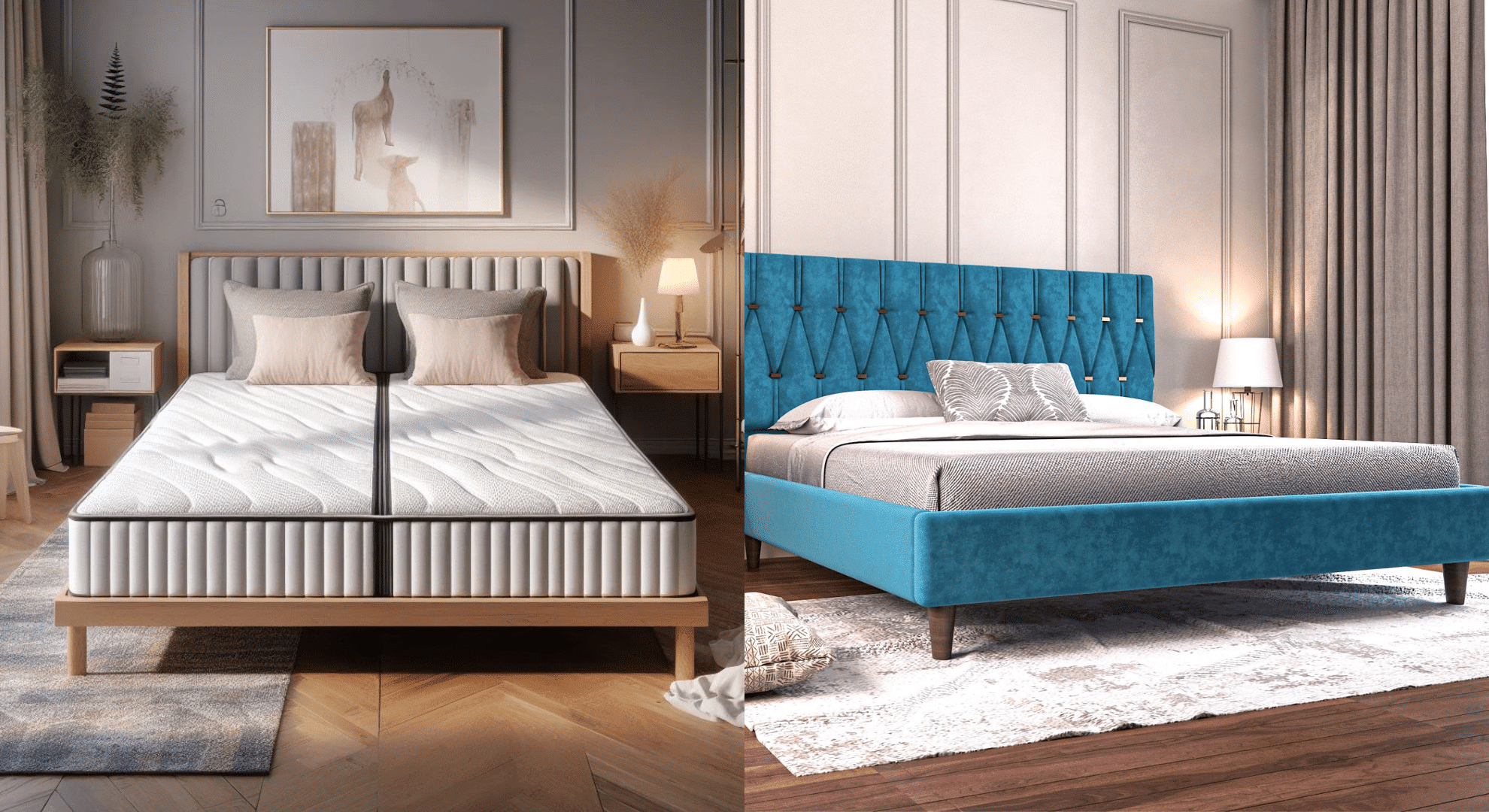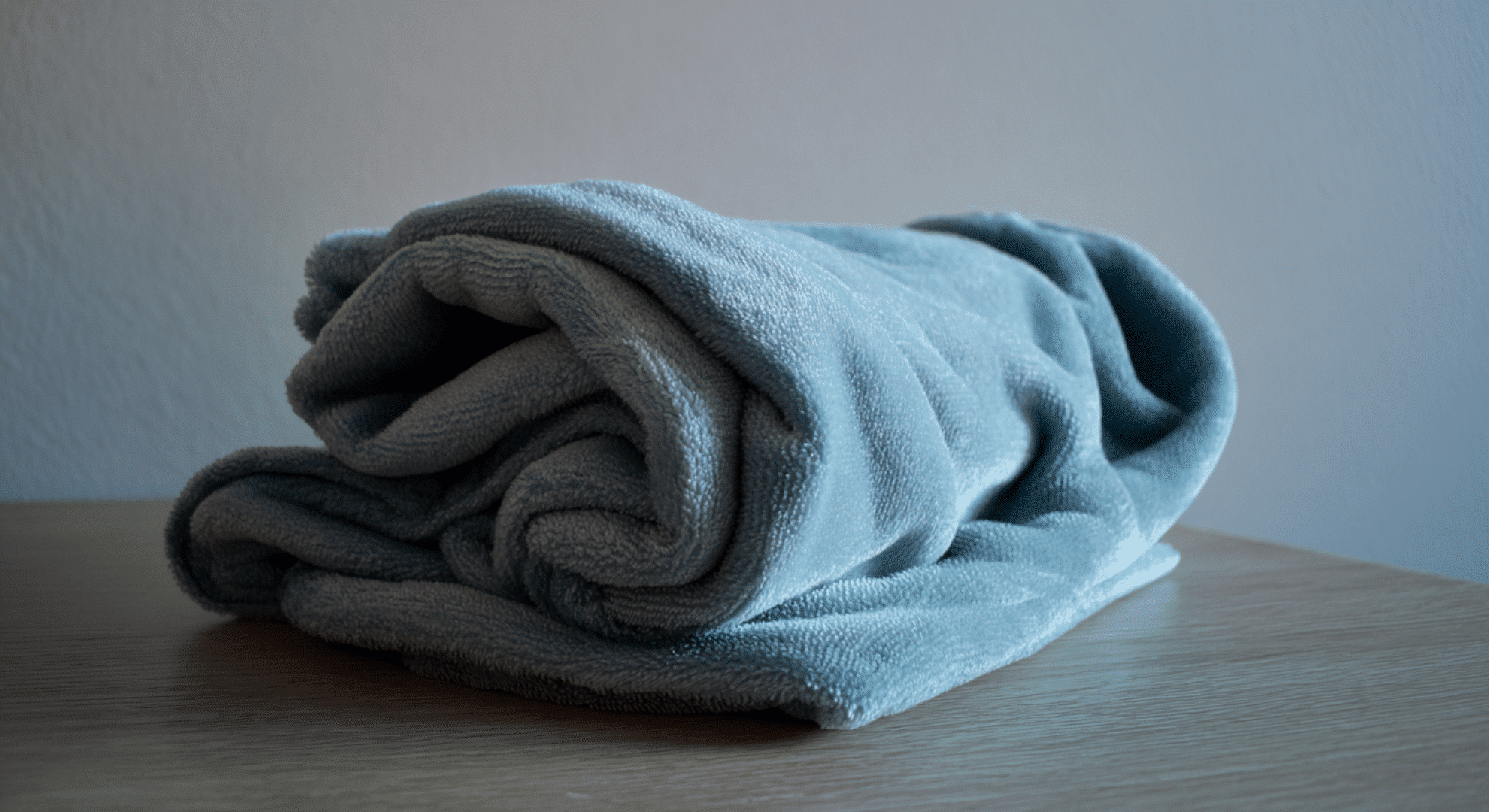I’ve always thought changing duvet covers shouldn’t feel like a workout. If you’ve ever fought with buttons or ties that never line up, you probably agree. That’s where zipper duvet covers come in.
A zipper duvet cover works just like a regular one, but uses a sturdy zipper instead of buttons or ties. It closes smoothly along one or more sides, keeping your duvet secure inside.
What I like most is how much faster it makes bed-making. You just zip and go. No more tugging or adjusting.
Whether you manage your own bedding or run an Airbnb, this small change can save time and frustration every single week.
What is a Zipper Duvet Cover?
A zipper duvet cover is exactly what it sounds like: a duvet cover with a built-in zipper closure instead of buttons, snaps, or ties. The zipper is usually sewn along one, two, or even three sides, depending on the design.
Unlike buttoned covers that can gap or come undone, zippers keep the duvet fully enclosed. That means no slipping corners or exposed edges. Some covers even include interior corner ties to keep the insert perfectly aligned inside.
As I see it, the main difference is speed and neatness. Zippers make putting on a duvet feel effortless. They also stay hidden under a small flap of fabric, giving your bed a clean, tailored finish.
The result is a smoother look and less shifting during sleep, ideal for anyone who wants a polished bed with minimal effort.
Benefits of Zipper Duvet Covers
Zipper duvet covers aren’t just about looks. They’re designed for practicality, comfort, and a cleaner, more polished sleep setup. Here’s why many people consider them a smart upgrade:
1. Easy to Change
If you’ve ever dreaded laundry day, you’ll love this. A zipper duvet cover can be changed in half the time it takes to deal with buttons or ties. Just unzip, slide out the insert, wash, and zip it back up. For busy homes or short-term rentals, this time-saver alone makes it worth it.
2. Keeps Duvet in Place
A big frustration with traditional covers is how the duvet shifts around inside. Many zipper styles include hidden corner ties or loops that keep the insert secure.
Combined with the closed zipper edges, the duvet stays flat and evenly distributed, so you don’t have to shake or fix it every morning.
3. Looks Sleek
One thing I’ve noticed about zipper covers is how neat the bed looks. The hidden zipper creates a smooth, uninterrupted line. There are no bulky buttons or ties showing.
It’s a subtle detail, but it makes the bedding look modern and tidy, something interior designers and hosts often prefer.
4. Safe & Durable
Buttons can pop off, and ties can tear over time. Zippers hold up better with repeated use, especially high-quality metal or nylon ones.
They’re also safer for kids since there’s nothing small to swallow or pull. With gentle care, a good zipper cover can last for years without losing function.
Zipper Styles and Mechanisms

Not all zipper duvet covers close the same way. The main difference lies in how many sides the zipper runs across.
Three-sided zippers open along two sides and the bottom, allowing the entire cover to lay flat. This design makes inserting or removing the duvet much easier, a favorite among Airbnb hosts and busy households.
Two-sided zippers are simpler and more common. They’re great for everyday use and look seamless once closed.
You’ll also find hidden zippers tucked beneath a flap of fabric for a cleaner look, and exposed zippers that serve as a design detail in more modern bedding styles.
Then there’s the triple-zip system, used mostly in hospitality settings. It allows quick changes and full access to the duvet insert without unzipping every side completely.
If convenience is your top priority, go for a three-sided or hidden zipper design.
Material Comparison for Zipper Duvet Cover
| Material | Feel & Comfort | Best For | Care & Maintenance | Key Benefits |
|---|---|---|---|---|
| Cotton | Soft, breathable, cool against skin | Every day use, warm climates | Machine-washable, durable | Natural, comfortable, long-lasting |
| Linen | Textured, softens over time | All seasons, eco-conscious users | Machine or gentle wash; may wrinkle | Temperature-regulating, sustainable, stylishly relaxed |
| Microfiber | Smooth, crisp, lightweight | Rentals, dorms, busy homes | Easy care, quick-drying, wrinkle-resistant | Affordable, durable, low-maintenance |
| Flannel | Warm, fuzzy, cozy | Cold weather, winter months | Machine-washable; heavier fabric | Excellent warmth, soft comfort |
| Silk | Smooth, luxurious, cooling | Master bedrooms, special occasions | Hand-wash or dry-clean only | Elegant, hypoallergenic, gentle on skin |
How to Choose the Right Zipper Duvet Cover
Choosing the right zipper duvet cover depends on your lifestyle and comfort needs.
Start with bed size. Make sure the cover matches your duvet exactly, as a loose fit can cause shifting.
Next, think about fabric type. Cotton is great for daily use, linen for durability, and microfiber if you prefer low maintenance.
Consider design preferences too. Hidden zippers create a clean look, while exposed ones can add a modern edge.
In my experience, ease of care is also worth checking. Look for machine-washable fabrics and sturdy zippers that won’t snag easily.
Lastly, factor in price and return policy. If you’re trying a new brand, choose one that offers returns or exchanges. The best cover is one that fits your style, feels comfortable, and works with your daily routine.
Best Zipper Duvet Cover Brands to Consider
When shopping for zipper duvet covers, a few brands stand out for quality, convenience, and style. Here’s a quick look at some of the best:
| Brand | Best For | Key Features |
|---|---|---|
| Beddy’s | All-in-one bedding | Full zip-around system, fitted sheet built-in |
| Beddley | Luxury bedding | Three-sided zipper, premium fabrics |
| QuickZip | Easy use | Wrap-around zipper, secure corners |
| Fix Linens | Sustainability | Organic cotton, simple design |
| Pippen House | Premium feel | Heavyweight linen and cotton |
| Doze | Everyday comfort | Affordable microfiber options |
| IKEA | Budget option | Simple zippers, basic styles |
DIY: How to Add a Zipper to an Existing Duvet Cover
If you already have a duvet cover you love, you can add a zipper yourself.
Tools & Materials:
- Zipper (about 2″ / 5 cm shorter than the duvet cover width)
- Sewing machine or strong fabric glue (fabric-specific)
- Matching thread (if sewing)
- Fabric pins or clips, scissors, seam ripper, ruler/tape, chalk/marker
- Iron (helpful for crisp folds)
Time: 30–60 minutes | Skill: Beginner-friendly
- Mark the placement: Lay the duvet cover flat and mark where you want the zipper—usually along the bottom edge.
- Open the seam: Use a seam ripper to create an opening equal to the zipper’s length. Remove any old buttons or ties.
- Prep the edges: Fold fabric edges inward about ½” (1.2 cm) and press flat with an iron.
- Position the zipper: Place the zipper under the folded edges, aligning the teeth with the fold.
- Attach securely: Sew along both sides using a zipper foot or apply a thin line of fabric glue. Let the glue dry if used.
- Test and finish: Zip it open and closed to ensure smooth movement, then reinsert your duvet insert.
I’ve tried this method on older covers, and it’s an easy way to upgrade them without replacing the entire set.
Care and Maintenance Tips for Zipper Duvet Covers
Taking good care of your zipper duvet cover helps it last longer and keeps your bedding fresh. Follow these simple steps to maintain both the fabric and the zipper.
- Washing: Use cool or warm water with a mild detergent to protect the fabric’s fibers and color. Avoid overloading the washer, as this can pull on the zipper and strain the seams.
- Zipper Care: Before washing, fully close the zipper. This prevents it from catching on other fabrics or getting damaged during the spin cycle. If your zipper feels stiff, gently run a little candle wax or a drop of zipper lubricant along the teeth.
- Drying: For cotton or microfiber covers, machine-dry on low heat. For linen or silk, it’s best to air-dry to maintain softness and texture. Always remove the cover promptly to prevent wrinkles.
- Ironing: If you prefer a crisp look, use a low to medium heat setting. Cotton and linen respond well to light ironing, while delicate fabrics like silk should be ironed inside out or with a pressing cloth.
- Storage: Once clean and dry, zip it closed before folding. This keeps dust out and helps the cover maintain its shape. Store it in a cool, dry place, away from direct sunlight.
Conclusion
Zipper duvet covers make bedding simpler, faster, and more polished without sacrificing comfort. From easy changing to a neat, secure fit, they solve the everyday frustrations of traditional covers.
Adding a zipper to your existing cover is an easy DIY project if you enjoy home upgrades. With proper care, a zipper duvet cover can last for years while keeping your bed looking effortlessly tidy.
If you’re ready to simplify your bedding routine, try switching to a zipper duvet cover. It’s a small change that makes a big difference









